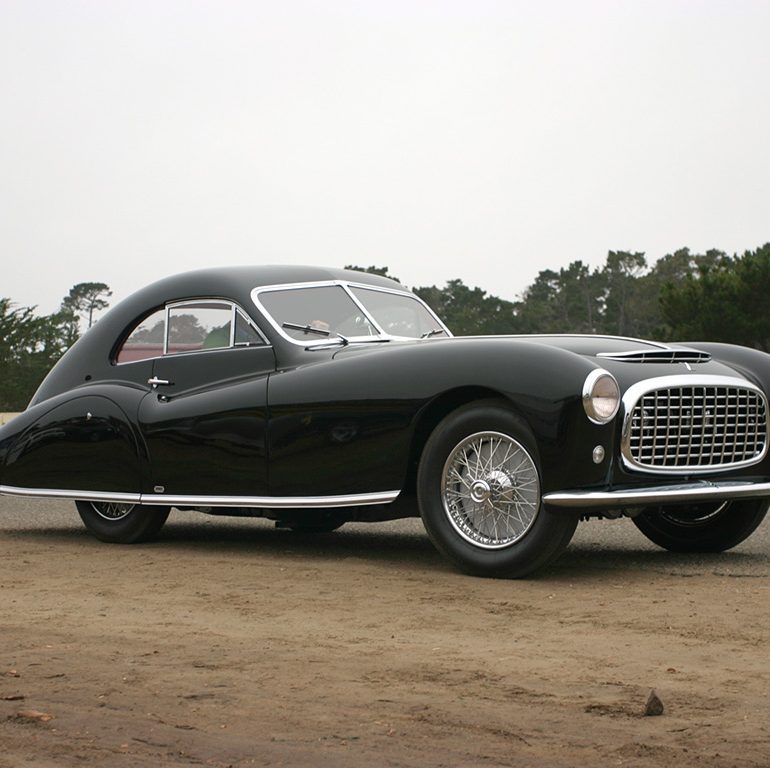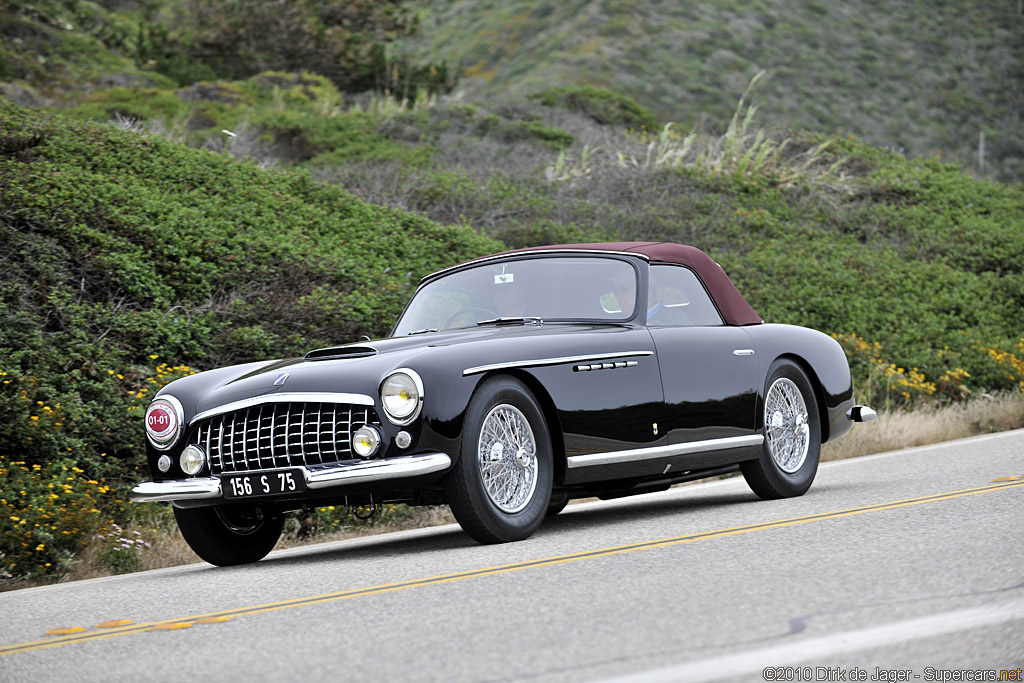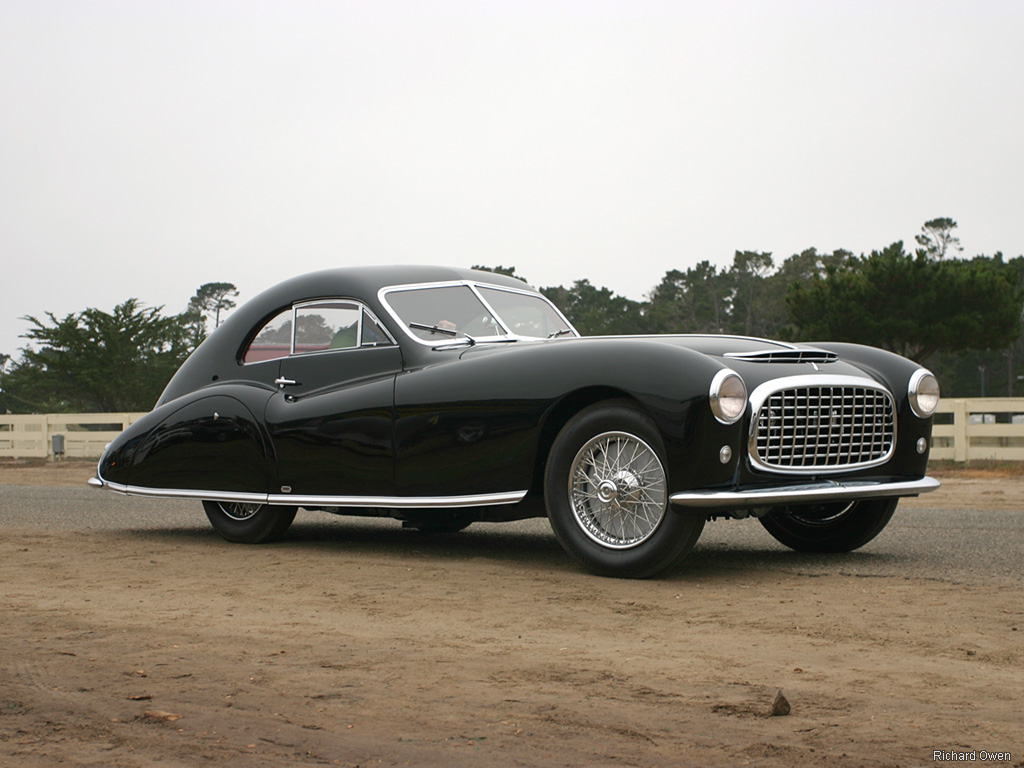1948→1951 Talbot-Lago T26 Grand Sport
One of the immediate post-war cars that received notoriety for its speed was the T26 Grand Sport (GS). It was built for either racing or luxury and benefited directly from Talbot’s successful T26 Course Grand Prix car. As such it was expensive, rare and helped Louis Rosier win the LeMans 24 Hour race.
The GS replaced the Record chassis which was named for its remarkable top speed. Having a 4.5-liter, inline-6 with aluminum cylinder heads and triple carburetor fuel feed from the T26 the Grand Prix cars, the GS was one of the world’s most powerful production cars. It produced 190 bhp which was good for around 125 mph depending on the body that was fitted.
Chassis details were similar to the Grand Prix cars, but it was longer and wider. It came it two wheelbase lengths -104 and 110 inches.
All Talbots of the period used a body-on-frame design and had a strong enough chassis to receive a body from wherever the customer chose. Thus, no two cars were alike in the series of 36, and some became the most beautiful expressions of automotive art. Many of the great pre-war design houses like Saoutchik and Figoni & Falaschi were still around to body the T26 in their own way.
Two competition T26s, chassis 110055 and 90131, were prepared for LeMans and looked like underdogs with their pre-war technology compared to competition like Ferrari. However, 24 hour reliability helped the two cars, especially after the Ferraris dropped out, and they placed both first and second place. Louis Rosier raced the winning car for the whole duration except for two laps that his son Jean-Louis drove. In the 24 hours, Rosier peronally changed a rocker arm while in the pits and suffered a black eye in the night when an owl went through the windscreen! For his victory, Louis Rosier was named the Champion of France.
Tony Lago must have been pleased with the LeMans result as four years earlier he said ”Whenever one of my cars wins a race, I feel that I am paying a moral debt to the country which has permitted me to realize my life’s dream.”
Unfortunately the Grand Sport was one of the last great cars made by Talbot-Lago. In 1958 the company was bought by Simca.
In Detail
| submitted by | Richard Owen |
| type | Series Production Car |
| production years | 1948 – 1951 |
| engine | Inline-6 |
| position | Front Longitudinal |
| aspiration | Natural |
| valvetrain | 2 Valves per Cyl |
| fuel feed | Tripple Zenith-Stromberg Carburetors |
| displacement | 4482 cc / 273.5 in³ |
| bore | 92.96 mm / 3.66 in |
| stroke | 109.98 mm / 4.33 in |
| compression | 8.4:1 |
| power | 141.7 kw / 190 bhp @ 4200 rpm |
| specific output | 42.39 bhp per litre |
| body / frame | Body over Box-Section Steel Frame |
| driven wheels | RWD |
| front brakes | Lockheed Drums |
| rear brakes | Lockheed Drums |
| steering | Rack & Pinion |
| f suspension | Wishbones w/Transverse Leaf Springs |
| r suspension | Rigid Axle w/Semi-Elliptic Leaf Springs |
| wheelbase | 2650 mm / 104.3 in |
| front track | 1481 mm / 58.3 in |
| rear track | 1475 mm / 58.1 in |
| transmission | Wilson 4-Speed Manual |
| top speed | ~201.2 kph / 125 mph |







